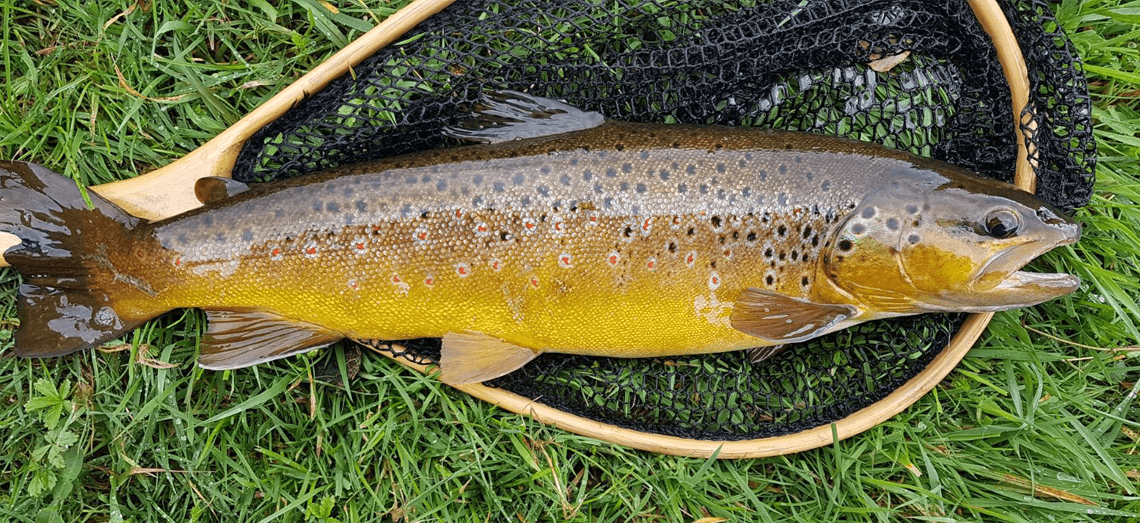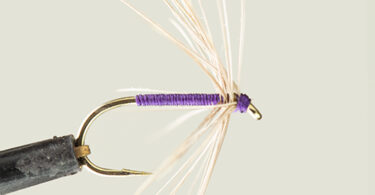
Grannom Fattened Trout
April on my home river beats marks a natural phenomenon known as the Grannom hatch. At its peak a Grannom hatch can resemble a blizzard. The sheer numbers of flies coming off the water can drive the fish into a feeding frenzy as they make the most of this early season bonanza. Grannom generally start to hatch early April and can last for 2 weeks, generally these hatches start early morning but there can also be a second hatch in the afternoon. During the hatch trout and grayling gorge themselves on the ascending nymphs and emerging adults on the surface. Grannom hit the surface and emerge fairly quickly so fish show themselves with a big splashy rise. At peak times in a hatch it’s not unknown for them to craw up and emerge on waders!

Mass hatch on the Ribble 2015 (photo David Hoyle)
Of the Grannom that do emerge unscathed they amass in the air and fly to the bankside cover where they are often disturbed back into the air as you travel along the banks. Once matured the Grannom take flight from the undergrowth and return to the river to mate and lay eggs. The females can be seen egg laying by flying down and dipping there exposed egg sac in the water until they finish exhausted trapped in the film spent spinner style. This gives the trout and grayling a bonus meal sipping down the spent flies.

Fish food: adult Grannom sat in surface film
My first experience of a Grannom hatch was in April 2009 when suddenly the run I was fishing began to boil with fish rising left right and centre! I was fishing a usual early season olive pattern and was getting nowhere. I studied the water for a while and saw no sign of olives but large shucks around my legs. I managed to catch one emerging in front of me and saw it was sedge so I swapped over to a tan Klink and caught 5 fish in quick succession and then the river fell quiet. All around me sedges danced in the sky en mass. I caught a few specimens at different stages of the adult cycle and took photos to study later. The only one I didn’t manage to catch but could observe in the clear water was the ascending pupae.

Left to right: emerger, hatched adult, egg laying female
Back at home I was to discover they had in fact been Grannom. I noted the obvious characteristics and possible triggers to feeding fish mainly the green and black barred body and the green egg sac of an egg lying female and set about incorporating them in to a specific fly pattern.

Left to right: spent adult, trout’s eye view
Fast forward a couple of seasons and after a bit of research, design and trial of different Grannom patterns I settled on a single dry and nymph pattern for Grannom. With the emerger I aimed to replicate a large insect trying to break from the shuck at 45-90o angle. The shuttlecock was the best method for this and at the same time incorporated the obvious black and green banding of the body. The nymph played on a green colour for the body but instead of black banding I used a holographic green to give a bit of sparkle and set it out from the mass of other emerging pupae and perhaps a hint of a gleaming air sac. A 2.5mm copper tungsten bead meant it could quickly get down in a fast streamy run.

Left: Hoyle GEM
Right: Grannom Pupae
The following season, April 2012, Joel and I went to a beat on the Ribble to put the new patterns to the test. As we arrived at the river there was no sign of a hatch but a few fluttering about the bankside showed our timings were right and the window was open. Not seeing any rising fish we both started with nymph hoping if the hatch was about to start the fish would be on the lookout for ascending pupae. To our amazement the fish responded and quickly we were both taking trout and grayling on the nymph fished French leader style. Then the pupae began to hit the surface and hatch and our sport continued switching to the dry with the fish rising all up the run. After a frenetic day of activity we sat back on the bank for a coffee to reflect in amazement, 17 fish for me and 19 fish for Joel on both nymph and dry. The flies had suddenly cemented a place in our boxes! Joel even decided to name the dry fly Hoyle’s GEM!
Since that day in 2012 the GEM and the Grannom pupae have consistently caught fish when there have been Grannom in the air. When fishing the GEM I treat the CDC feathers with frog’s fanny whilst holding the body between 2 wet fingers. This makes sure the fly is saturated as it hits the water and quickly cocks itself in emerging position. I either cast directly to rising fish or if rises are sporadic I prospect the likely spots. It is amazing how a fish can suddenly throw itself at the fly so full concentration is required. The pupae can be fished duo style or French leader style, it really depends upon the conditions in front of you. I generally fish French leader style from the neck to body of a run and then duo from the tail of the run into a pool. Depending on the intensity of the hatch the fish can hold in the slower water at the tail of the run or be right in the melee of the run mopping up both pupae and emerger, so it’s best to cover each section.
Apart from the day in 2012 my most memorable day fishing a Grannom hatch came in last April where I caught my largest river Brown Trout of 4lb 8oz on a Grannom pupae and then 2 casts later caught a trout of 3lb 4oz on a GEM and a further 3 casts later caught a trout of 2lb on the Grannom pupae. The trout really do switch on when the Grannom are about as it is a true early season feast. To compound how hard the fish feed on the Grannom in such a short window 6 days after I caught the 3lb 4oz trout my Dad caught the same fish on a GEM and it weighed 3lb 8oz. It was recognisable from the photos we had taken it was the same fish and it was visible how much fuller the fish was in the belly.

8th April 2017: 3lb 4oz

14th April: 3lb 8oz
If you are lucky enough to be fishing a river system that has a Grannom hatch it is well worth kick starting your season with this bonanza!




